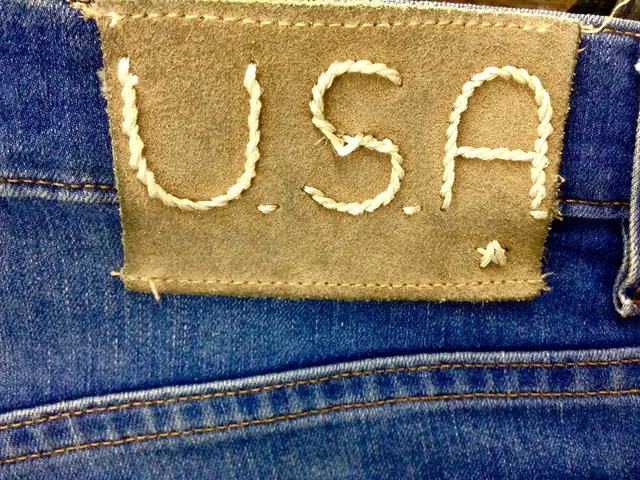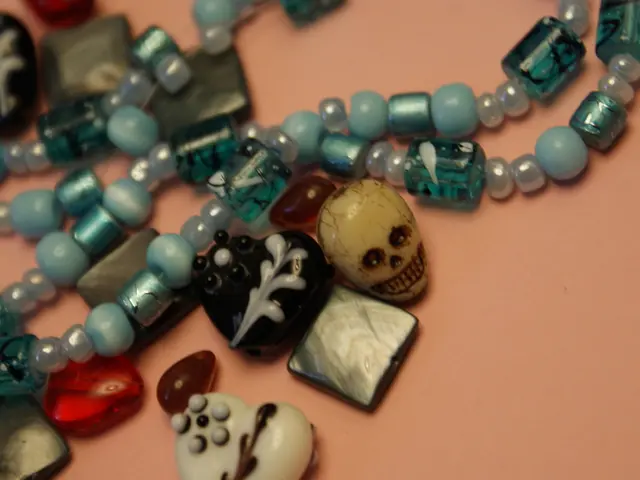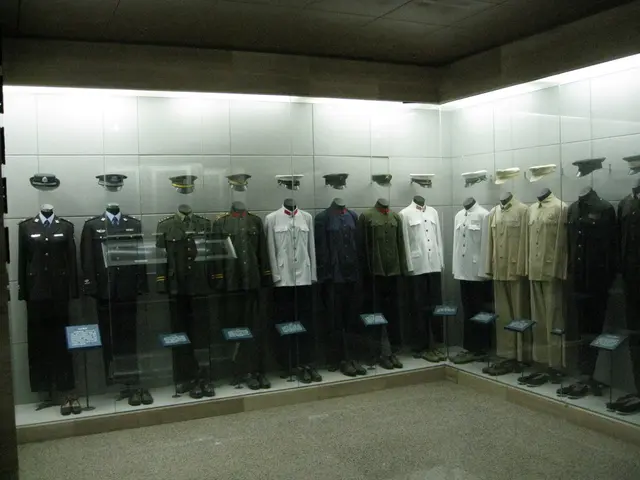Online Shopping for Authentic Jewelry: Expert Advice
Online jewelry shopping can be a breeze, offering access to a vast array of stunning pieces from all around the world. But with great selection comes the need for caution. With no physical examination beforehand, it's essential to be on the lookout for what you're buying. Whether you're after a spectacular gift or a treat for yourself, understanding what to look for ensures you'll receive quality jewelry that meets your expectations, both in terms of authenticity, craftsmanship, and value.
Breaking Down the Basics: Understanding Jewelry Materials
The foundation of top-notch jewelry starts with recognizing the materials used. Precious metals and gemstones can vary greatly in quality, and knowing how to spot authentic materials from their descriptions and certifications is crucial when shopping online. Ignorance of these elements can easily make you overpay for shoddy materials or fall victim to deceptive language masking low-quality components.
- Gold Purity: Gold quality significantly impacts both value and durability. Gold is measured in karats, with 24K being pure gold (99.9%). Most jewelry uses 18K containing 75% gold, 14K containing 58.3% gold, or 10K containing 41.7% gold mixed with other metals. Higher karat gold is more valuable but softer, while lower karat gold is more durable but contains less actual gold. Always look for proper hallmarks, like "585" for 14K, "750" for 18K, or "417" for 10K, stamped on the piece.
- Silver Quality: Silver should be clearly marked and priced appropriately. Quality silver jewelry is marked as "925," indicating 92.5% pure silver, and has a bright, lustrous appearance. Pure silver is too soft for jewelry, so it's alloyed with copper for strength. Be wary of silver jewelry without proper hallmarks or that's suspiciously underpriced, as it may be silver-plated or even nickel-based.
- Platinum: Platinum is premium, hypoallergenic, and distinctly heavy. Look for hallmarks like "PT950" or "PLAT" indicating platinum content of at least 95%. It's significantly heavier than silver or white gold and maintains its white color permanently without plating. Authentic platinum jewelry typically costs more than gold due to its rarity and durability.
- Gemstone Quality: Gemstone quality is determined by the "Four Cs." Cut refers to how well it's shaped, color describes the hue and saturation, clarity indicates the presence of inclusions, and carat weight measures size. All these factors determine a gemstone's value. Reputable sellers provide certification for valuable stones from recognized labs like GIA, AGS, or IGI, especially for diamonds and precious colored stones.
- Lab-Created Gemstones: lab-created gemstones offer excellent value without compromising quality. These are chemically and physically identical to mined stones but typically cost 30-40% less. They're real gemstones created in controlled environments, not imitations, and represent an ethical alternative to mining.
Learning about jewelry materials helps you evaluate whether the price matches the quality and make informed comparisons between similar pieces. Trustworthy online jewelers will be transparent about their materials, providing detailed descriptions, proper hallmarks, and certification for precious stones. As a heads up, if you come across exceptionally low prices for high-value items, chances are, something ain't exactly kosher.
Securing a Trustworthy Online Jeweler
Finding a reliable online jewelry store is arguably the most critical decision in your online shopping journey. A trustworthy retailer will stand behind their products and provide accurate, relevant information. Taking time to vet potential sellers before committing to a purchase can save you from fraud, misrepresentation, and poor customer service experiences.
- Business Longevity: Check the "About Us" page or business registration details to verify how long they've been operating. Well-established retailers with several years in business generally offer more reliability and have proven their commitment to customer satisfaction.
- Customer Reviews: Look beyond star ratings to read detailed reviews about product quality, customer service, and how the company handles problems. Pay special attention to reviews mentioning product accuracy, shipping times, and how returns were handled.
- Clear, Comprehensive Policies: Reputable jewelers offer detailed information about their return policies, warranties, shipping methods, and payment security. The absence of this information or vague terms should raise red flags about the retailer's trustworthiness.
- Certification and Industry Affiliations: Look for memberships in recognized jewelry associations like the Jewelers of America, American Gem Society, or Better Business Bureau accreditation. These affiliations typically require adherence to ethical business practices and quality standards.
- Quality of Product Information: Trustworthy jewelry retailers provide detailed product descriptions, including exact materials, dimensions, weight, and origin information. Vague descriptions or missing specifications suggest the seller may be hiding something or lack expertise.
- Secure Website Features: Ensure the website has "https://" in the URL and displays security symbols. These indicate encryption that protects your payment information. Also, verify they have a privacy policy explaining how your data is used.
Investing time in thoroughly researching retailers before sealing the deal can prevent the much larger headache of dealing with returns, disputes, or even fraud after an ill-advised purchase. A reputable jeweler will be happy to answer any questions you may have about their products and provide additional information if requested.
Budgeting Smarter for Online Jewelry Shopping
Setting a realistic budget is crucial when buying jewelry online, as prices can fluctuate dramatically based on materials, craftsmanship, and brand reputation. By understanding the components affecting jewelry pricing, you can make informed decisions and get the best value for your money.
- Precious Metal Content: The weight and purity of gold, silver, or platinum directly impact cost. Higher gold content in 18K gold, for example, results in more expensive jewelry than 14K gold of the same design due to its higher gold content. Consider whether the higher purity is crucial for your needs before shelling out the extra bucks.
- Gemstone Pricing: Gemstone value varies based on the Four Cs (cut, color, clarity, and carat weight) and rarity. Large, high-clarity stones with exceptional cuts and rare colors command higher prices. Recognizing these factors helps you identify areas to compromise for value, such as choosing a smaller stone with extraordinary clarity and color rather than prioritizing size alone.
- Craftsmanship Quality: Durable, well-made jewelry has clean solder joints, consistent gemstone settings, smooth finishes, and sturdy clasps or findings. These details affect both appearance and longevity, making higher-quality craftsmanship worth the investment for pieces you'll wear regularly.
- Brand Names: Well-known jewelry brands often charge premium prices for their reputation and design aesthetic. While established brands may assure quality, lesser-known jewelers can offer excellent quality at more accessible prices. Decide whether the brand name is important to you before footing the premium.
- Sales and Discounts: Many reputable online jewelers offer seasonal sales, holiday promotions, or clearance events where you can find quality pieces at reduced prices. However, beware of perpetual "sales" or extreme discounts, as these can indicate inflated original prices or lower-quality merchandise.
Understanding the value components of jewelry helps you allocate your budget effectively and make informed decisions about where to invest and where to economize. Quality jewelry represents a thoughtful balance between material value, craftsmanship, and design. By pinpointing which aspects matter most to you personally, you can make smart compromises to stay within budget and still secure jewelry that'll steal the show for years to come. Don't forget that fine jewelry often functions as an investment – choosing quality over quantity usually leads to greater satisfaction and longevity.
Avoiding Sizing Snafus in Your Online Purchases
Accurate sizing is crucial when buying jewelry online, as returns and exchanges can be inconvenient and sometimes costly. Taking proper measurements before ordering helps ensure your jewelry fits like a glove (or a ring) right out of the box. Sizing issues are among the most common reasons for jewelry returns, so investing time in getting measurements right can save significant heartache later.
- Ring Sizing: The most precise method is to visit a local jeweler for professional sizing. Alternatively, you can measure a ring that fits well using a millimeter ruler across the inside diameter, then consult a ring size conversion chart. Paper or string measurement methods are less accurate but can provide a rough estimate if you wrap them around your finger and mark where they meet.
- Bracelet Sizing: Measure your wrist with a flexible measuring tape at the widest point, then add 1/2 to 1 inch for a comfortable fit. For chain or link bracelets, add less extra space; for bangle bracelets, make sure they can slide over your knuckles, so measure the widest part of your hand with your thumb tucked in.
- Necklace Length: Standard necklace lengths range from 14 inches (choker style) to 30+ inches (opera or rope length). To find your ideal length, measure from the base of your neck to where you want the necklace to fall, or measure a necklace you already own and like the fit of. Consider that pendants will hang below the chain length by their height.
- Earring Dimensions: Pay attention to the size and weight of earrings, especially for pierced styles. Heavy earrings can cause discomfort or even tear earlobes over time. For drop or dangle styles, consider the length in relation to your neck and face shape.
- International Sizing Standards: Different countries use different measurement systems for rings and other jewelry. When shopping internationally, always check the retailer's sizing chart and conversion information to ensure you're ordering the correct size.
Being meticulous about jewelry sizing ensures comfort, appearance, and prevents loss of valuable pieces. Most reputable online jewelers provide detailed sizing guides specific to their products. When in doubt, contact customer service for assistance with sizing questions. Remember that certain styles may fit differently even at the same technical size, so reading product descriptions carefully is essential. Taking the time to determine accurate measurements before ordering can significantly improve your online jewelry shopping experience and reduce the likelihood of returns or exchanges.
Reading Between the Lines in Jewelry Product Descriptions
Product descriptions serve as your window into what you're actually buying when shopping for jewelry online. Learning to decipher these descriptions helps you identify quality pieces and avoid letdowns. Since you can't physically handle the jewelry before purchase, these product descriptions become your primary source of information about materials, construction, and features. Mastering jewelry terminology enables you to make informed decisions.
- Metal Descriptions: Look for precise terms like "14K gold" rather than vague descriptions like "gold-tone" or "gold-colored," which likely indicate costume jewelry. For silver, "sterling silver" or "925 silver" indicates proper silver content, while "silver-plated" means only a thin layer of silver over a base metal.
- Gemstone Information: Quality listings will specify whether stones are natural, lab-created, or simulated. For valuable gemstones, look for detailed information about carat weight, cut, clarity, and color. General descriptions or scarce details about gemstones may indicate lower quality or even misrepresentation.
- Dimensions and Weight Data: Essential clues about quality can be found in these aspects. Lightweight pieces that seem substantial in photos may indicate hollow construction or thin metal. Consider specifying measurements, including chain length and width, pendant dimensions, ring band width, and total item weight in grams.
- Manufacturing Methods: Terms like "hand-crafted," "cast," or "stamped" tell you how the piece was made. Hand-finished jewelry usually has more character and attention to detail, while mass-produced pieces may be more uniform but potentially less unique.
- Certification Information: For fine jewelry, especially those with valuable gemstones, look for mention of certificates of authenticity from recognized gemological laboratories. These certificates verify the quality and characteristics of the stones and should be included with your purchase.
Decoding product descriptions helps you make informed decisions and establish reasonable expectations. Sellers who offer detailed, honest descriptions without excessive marketing language are typically more trustworthy. If a description seems incomplete or confusing, don't hesitate to contact the seller for clarification before making a purchase.
Illuminate Your Online Shopping with Quality Photography
Quality product photography is essential for assessing jewelry online. The right images can tell you a lot about craftsmanship, materials, and overall appearance before you buy. Since you can't physically examine the piece before purchase, photos become your eyes, allowing you to inspect details and visualize how the jewelry will look when worn. Learning how to evaluate product images critically helps you avoid misleading representations and make better purchasing decisions.
- Multiple-Angle Photography: Quality jewelry listings include images from several angles, showing the piece from the front, sides, back, and any special features. Be cautious of listings with just one or two images, as they may be hiding flaws or misrepresenting the item.
- Close-up Detail Shots: Look for magnified images showing prong settings, stone clarity, metal finishes, and clasp mechanisms. These details speak volumes about the overall quality and durability of the piece.
- Scaled Reference: Good product photography often includes an image showing the jewelry being worn or next to a common object for size reference. This helps prevent surprises about the actual dimensions when your purchase arrives.
- Consistent Lighting: Professional jewelry photography uses controlled lighting to show true colors and details. Be wary of listings where the metal or gemstone color appears dramatically different across images, as this may indicate color enhancement or misleading representation.
- Minimal Photo Editing: While some editing is standard for background cleaning, excessive photoshopping can misrepresent shininess, gemstone clarity, or metal color. Look for natural-looking photos that show realistic reflections and subtle details rather than overly perfect, artificial-looking images.
- Video Content: Many quality online jewelers now include short video clips that show how pieces move and how light plays off surfaces and gemstones. These can be invaluable for understanding the true appearance of items like diamonds that are valued for their brilliance and fire.
Learning to distinguish between professional product photography that accurately represents jewelry and misleading images designed to hide flaws or exaggerate beauty can significantly improve your online shopping experience. If the photos look too good to be true or lack detail, request additional images before investing in a piece. Trustworthy sellers will gladly provide more visual information to help you make an informed decision.
Let Excellent Customer Service Shine Before Your Purchase
How a jewelry retailer responds to inquiries before you make a purchase often indicates how they'll handle any issues that arise afterward. Testing customer service can provide valuable insights into the company's reliability and commitment to customer satisfaction. Taking time to interact with retailers before purchasing not only helps gather information but also establishes a relationship that can be valuable if problems occur later.
- Response Time: Quality jewelry retailers typically respond to inquiries within 24 business hours. Longer wait times may signal understaffing or poor organization, which could affect other aspects of your purchase experience.
- Question Handling: Send specific questions about materials, gemstone origins, or craftsmanship details. Knowledgeable responses with precise information indicate the company understands their products. Vague answers or redirects to already-available information may suggest limited product knowledge.
- Customization Willingness: Ask if minor modifications are possible, such as chain length adjustments or alternative gemstone options. Retailers who accommodate reasonable customization requests often take greater pride in customer satisfaction.
- Communication Style: Professional, friendly, and thorough responses usually reflect a customer-focused business. Be wary of overly pushy sales tactics or dismissive attitudes, which might signal a transaction-focused rather than relationship-focused company.
- Pre-sale Assistance: Offers guidance on sizing, material selection, and style recommendations before purchase. This consultative approach typically extends to after-sale support, including returns and warranty claims.
- Transparency About Limitations: Reputable retailers acknowledge when they can't fulfill unusual requests or answer certain questions, rather than making excessive promises they can't keep. This honesty usually extends to product descriptions and policies.
Your interactions with customer service before purchase provide valuable insights into the retailer's business practices. Take the time to ask questions, even if you think you know the answers, to gauge the company's responsiveness and knowledge. Companies that invest in quality customer service typically invest in quality products as well. Consider these interactions as an interview process – you're evaluating whether this company deserves your business and trust with what might be a significant purchase. A retailer's willingness to build a relationship before the sale often translates to better service throughout your ownership experience.
Protect Your Purchase with Safe Shipping Options
Proper shipping and insurance are crucial when purchasing valuable jewelry online. Knowing what to expect and what protections are in place helps ensure your purchase arrives safely and securely. Since jewelry items are often both valuable and relatively small, they can be targets for theft or damage during transit. Understanding how your purchase will be protected throughout its journey provides peace of mind and financial security.
- Shipping Methods: Reputable jewelry retailers use insured shipping methods with tracking capabilities for all orders. Premium or higher-value items should ship via signature-required delivery services that provide confirmation of receipt.
- Insurance Coverage: Quality jewelry retailers automatically insure packages for their full value. Check whether the insurance covers the entire journey or only until the package leaves the seller's facility. Full-journey insurance provides better protection against loss or damage.
- International Shipping Considerations: Customs duties, taxes, and import regulations can affect delivery times and final costs. Reputable international jewelry sellers provide clear information about potential additional fees and estimated clearance times for your location.
- Packaging Quality: Fine jewelry should arrive in protective outer packaging that doesn't reveal the valuable contents inside. Inside, proper jewelry boxes, padding, and secure mounting should prevent movement and damage during transit.
- Shipping Timeframes: Look for transparent information about processing times (how long before the item ships) and delivery timeframes. Be wary of retailers who don't provide clear shipping timeframes, as this may indicate inventory or fulfillment issues.
- Address Verification: Reliable jewelry retailers will verify your shipping address and may require the shipping address to match your billing address for security purposes, especially for high-value purchases.
Understanding the shipping and insurance policies before purchase helps avoid surprises and delays. If shipping information seems vague or inadequate for the value of your purchase, contact the retailer for clarification. Quality jewelry deserves quality shipping protection, and reputable retailers recognize this as an essential part of the customer experience. Remember that even the most careful handling cannot eliminate all delivery risks, so proper insurance coverage is a non-negotiable component of any valuable jewelry purchase. Always verify that your item is covered throughout its journey from the seller to your door.
Protect Your Investment with Returns and Warranty Knowledge
Clear, fair return policies and comprehensive warranties are hallmarks of reputable jewelry retailers. These policies protect your purchase and demonstrate the seller's confidence in their products. Understanding the terms and conditions for returns and warranty coverage before purchase helps you assess the total value of the transaction and your recourse if something doesn't meet expectations or develops problems later.
- Return Windows: Quality jewelry retailers offer at least 14-30 days for returns, allowing enough time to properly inspect and try on the merchandise. Shorter return periods may not provide adequate time to assess craftsmanship and fit.
- Return Conditions: Understand what constitutes an acceptable return (unworn condition, original packaging, tags attached) and any specific exclusions, such as custom or personalized items, which typically cannot be returned.
- Restocking Fees and Return Shipping Costs: Some retailers charge restocking fees or require customers to pay return shipping. These fees should be clearly disclosed before purchase and should be reasonable relative to the item's price.
- Warranty Coverage: Quality fine jewelry often comes with warranties against manufacturing defects ranging from one year to lifetime coverage. Understand exactly what is covered (prongs, clasps, stone security) and what is excluded (normal wear, loss, theft).
- Warranty Service Processes: Look for clear instructions on how to obtain warranty service, including whether you must return the item to the original seller or can use local repair services. Quality warranties minimize customer inconvenience.
- Extended Protection Options: Some retailers offer additional protection plans covering more than standard warranties, including accidental damage or comprehensive repair services. Evaluate whether these plans provide value based on the jewelry type and how you'll use it.
Strong return policies and warranties indicate a retailer's confidence in their products and commitment to customer satisfaction. Be skeptical of retailers with overly restrictive policies, as these may signal quality concerns or poor customer service. Remember that even with generous return policies, the goal should be to purchase jewelry that'll become a cherished part of your collection, making returns unnecessary. However, having these safety nets in place ensures you're protected if unexpected issues arise. Quality jewelry should provide years of enjoyment, and reputable retailers stand behind their products with policies that reflect this longevity.
Authenticating Your Purchase Upon Delivery
When your jewelry arrives, taking steps to verify its authenticity and quality helps ensure you received exactly what you paid for. This final verification step completes your online purchase journey and provides peace of mind that your investment is genuine. Even when purchasing from reputable retailers, a systematic inspection helps confirm that no mistakes were made and that the item matches its description in every detail.
- Careful Packaging Inspection: Fine jewelry should arrive in proper branded packaging with all documentation, including certificates of authenticity, appraisals, or warranties. Missing or substandard packaging may indicate authenticity issues.
- Hallmark Verification: Check that the jewelry bears legitimate hallmarks or stamps indicating the metal's purity and authenticity. Common hallmarks include specific numbers for gold purity (e.g., 750 for 18K gold) and marks from assay offices[1][5].
- Certifications: For gemstones like diamonds, ensure that the piece is certified by reputable organizations such as the Gemological Institute of America (GIA), the American Gem Society (AGS), or the Gemological Science International (GSI). These certifications provide transparency regarding the stone's quality and authenticity[4].
- Craftsmanship Evaluation: Look for signs of expert workmanship, such as intricate details, well-finished settings, and secure clasps[3].
- Provenance and Documentation: Verify the history of the piece through documentation like receipts, appraisals, and certificates of authenticity. This is particularly important for vintage or antique items[5].
- Digital Access: Make sure that digital certificates are accessible and linked to the physical item for easy verification[4].
Taking time to authenticate your purchase upon arrival protects your investment and allows for timely returns if needed. Most reputable online jewelry retailers stand behind their products and will address any discrepancies between the described and delivered items. Trust your instincts – if something doesn't look or feel right, contact the seller immediately to resolve the issue. Remember that fine jewelry represents both emotional and financial value, making proper authentication an important final step in your online jewelry shopping journey. Documenting your authentication process with photos can also be valuable if you need to address concerns with the seller.
Sources:1. Hallmarks explained – Hallmarks are stamps or marks made on the surface of gold, silver, platinum, and other precious metals, providing a record of the purity, manufacturer, and assay office.https://www.bl.uk/western-heritage/discover/hallmarks/Articles_hallmarks.aspx2. Gold purity explained – Gold purity refers to the percentage of pure gold within an alloy. The most common gold purity measurements are karats, with 24K (24/24ths) being pure gold.https://www.investopedia.com/terms/g/gold_purity.asp3. Craftsmanship evaluated – Craftsmanship quality can be determined through examination of details such as finishing, polishing, and durability. Fine jewelry pieces should show careful attention to detail and precision.https://www.gemitech.com/blog/post/how-to-evaluate- jewelry4. Gemstone certifications explained – Gemstone certifications like those from the Gemological Institute of America (GIA), the American Gem Society (AGS), or the Gemological Science International (GSI) provide a secure, unbiased identification of the stone's quality, size, cut, color, and clarity.https://www.gia.edu/gem-certificates5. Verifying vintage and antique jewelry – Verifying the authenticity of vintage or antique jewelry can be more complex. This often requires close examination of markings, craftsmanship, and materials, as well as additional research into the piece's history.https://www.thediamondpro.com/vintage-engagement-rings-buying-guide/
- When shopping online for jewelry and accessories, not only consider stores that offer home-and-garden, lifestyle, fashion-and-beauty, and shopping categories, but also make sure to look into their jewelry section, as the quality of materials used can greatly impact the final product's appearance and durability.
- To find quality jewelry pieces online, it is essential to understand various materials such as precious metals like gold, silver, and platinum, as well as gemstones, each having their own qualities and values. By familiarizing yourself with the materials and their characteristics, you can make well-informed decisions and invest in quality pieces that will last.







